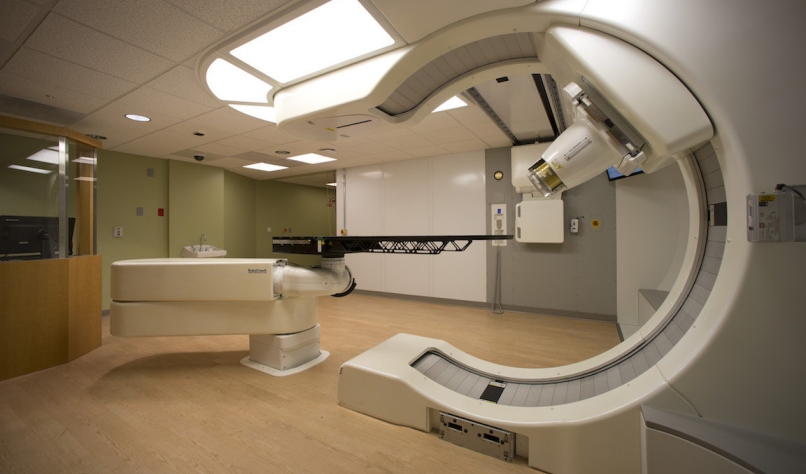Proton Beam Therapy Cancer Treatment
By Kathy Cooke. 1st October 2018
Radiotherapy remains a cornerstone treatment for cancers such as Mesothelioma and asbestos lung cancer, either as a way to reduce the size of a mesothelioma tumour prior to surgery or to reduce mesothelioma symptoms.
It works by aiming high doses of radiation precisely towards a tumour, from inside or outside of the body. This damages the DNA of the cancer cells and causes them to die.

The most commonly used type of radiation are x-rays, these are photons (tiny beams of light), that are launched at the tumour in highly targeted beams. Modern treatment uses 3D imaging techniques to identify the shape of the tumour and target the x-rays accordingly. However x-rays give off potentially damaging energy as they enter the body and continue their journey after they hit their target. This means that there is a risk of damaging healthy tissue around the tumour.
Proton beam therapy is a different type of radiotherapy. It uses a high energy beam of protons rather than high energy
x-rays to deliver a dose of radiotherapy for cancer patients. Protons on are tiny particles found within the hearts of atoms, they are one of the basic building blocks of matter, along with neutrons and electrons. They behave differently to the more energetic x-rays, in a way that makes them very attractive as a treatment. The key difference is that when the protons reach their carefully mapped out target, they come to a grinding halt. Here, they deliver a powerful burst of radiation on the spot, hitting the tumour precisely where it hurts.
Proton beam treatment works best on cancers with tumours affecting the base of skull or the spine. Here, it can be a more
effective form of therapy because it directs the all-important radiation treatment to precisely where it is needed with minimal damage to surrounding tissue. The treatment is therefore particularly suitable to complex childhood cancers.
With x-ray radiation, radiologists can only control the angle at which the beam enters the body and how much radiation all the tissue in its path receives. However, With proton beam therapy doctors can also decide where the beam should stop and release the majority of its energy. This means that for a tumour 2cms beneath the surface of the skin, the radiologist can set the speed of the protons so they come to a stop exactly 2 cms after entering the body. This is a complicated process as tissues have different densities and tumours may move as the patient breathes in and out. An experienced radiologist with proton beam equipment has considerably more control than they would with a traditional radiation machine, so can kill more cancer cells with the higher dose of therapy.
Proton Beam Therapy for Mesothelioma Cancer
Researchers have only recently explores the potential of proton beam therapy for mesothelioma patients. Mesothelioma is not localised as it quickly spreads and patients are often diagnosed in a late cancer stage. Patients benefit more from chemotherapy, which uses drugs to circulate through the body, targeting all tumours. However for patients where pleural mesothelioma has not spread outside of the chest cavity, proton therapy may be a good choice for shrinking the tumours while avoiding damage to the vital organs nearby, including the lungs and heart.
Unfortunately the proton beam therapy is extremely expensive in terms of both the cost of the equipment and the high level of expertise required to use it. Patients with asbestos-related lung cancer may be better candidates for proton beam therapy as it has reduced side effects than traditional radiotherapy.

Author
Kathy Cooke MA. BSc
Cancer consultant and advisor
Kathy has worked in the cancer field for over 30 years. She was course leader for the MSc in Radiotherapy and Oncology at University of Hertfordshire. Then pre-treatment radiotherapy manager at the Cromwell Hospital in London and Partnership Quality Lead for Macmillan Cancer Support.. Read more >













